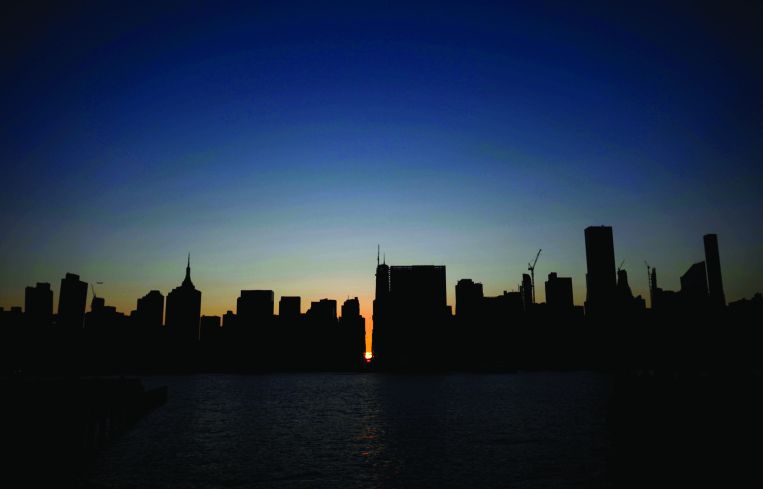When the Lights Go Out
What are landlords and building managers doing in the wake of the West Side blackout?
By Alex Appel July 23, 2019 1:29 pm
reprints
At 6:47 p.m. on July 13, subways stopped running in the middle of tracks, elevators halted midair and air conditioners clicked off. A large area of the city, from the Upper West Side down to 30th Street from Fifth Avenue to the Hudson River, went dark. Seventy-two-thousand people lost power for around five hours in the largest blackout New York City has seen in more than 15 years.
Bad as it was, this might have served as a useful warning to building owners and managers.
“I can pretty much guarantee that there’s going to be another blackout in the city this summer,” said Tom Harris, the Vice President of the Times Square Alliance. “Whatever it was for this one, won’t be the cause of the next one.”
The blackout was caused by a failure in Consolidation Edison’s substation at West 65th Street after a nearby 13,000 volt distribution cable short circuited. Both the relay detection system and the back-up system failed, according to statements released by Con Edison. And the company warns that, with the coming heat wave, more blackouts might occur.
“Most building systems restored normal functions automatically following the blackout. However, not all did,” said Comly Wilson, director of marketing at Enertiv, a proptech company which provides data-monitoring software for building managers, and was able to track clients’ power usage during the blackout. “In terms of automation, or control systems, the blackout reset the schedules and ‘set points’ for some systems. These issues usually remain for weeks or months because the systems are designed to follow instructions, not to question if those instructions are correct.”
New York City landlord Rudin Management experienced a surprising problem during the recent blackout. Its facility monitoring system showed that, after an initial dip in electricity at 3 Times Square, the building had an overvoltage condition, according to Gene Boniberger, Rudin’s senior vice president and director of building operations. It was being fed 20 percent more power than average for almost three hours.
“What we’re used to seeing is low voltage conditions,” Boniberger said. “What we learned from this is that it can go the other way too — in a rare occurrence — and you need to protect against that.”
Rudin was able to switch mechanical pumps, fans and motors offline. If they had not been able to do this, there probably would have been damage to certain building systems, including the elevators and cooling, Boniberger said. When anticipating future blackouts, Rudin will be watching for a voltage surge as well as loss of power, he said.
As more owners in the city adopt automated systems in their properties — like building entry tools — companies that provide this technology have built in safeguards to deal with power outages. Latch, the maker of keyless locks, equips most of its unit-entry devices with batteries so they can function during blackouts.
“As a security measure, our door reader device, the Latch R, has been configured to fail secure in the case of a blackout or similar scenario. However, building managers can choose whether their device fails safe, staying unlocked, or fails secure, staying locked,” said Luke Schoenfelder, the company’s co-founder and CEO. “Many of our customers have built in a backup power supply for exactly this kind of scenario, so residents should always be able to enter with ease—and in the case of this weekend, they were.”
There were reports of companies unable to operate without power. Theaters on Broadway had to cancel 26 shows the night of the blackout and saw a $3.5 million drop in weekly earnings, the New York Times reported. The loss of energy and refrigeration forced many restaurants to close and throw out 29 tons of food, USA Today reported.
In Times Square, the Knickerbocker Hotel was the scene of firefighters helping people out of elevators into a fully-lit lobby, according to pictures published by CNN. The hotel switched to their back-up generator sporadically throughout the night and was able to avoid disruption due to the power outage, the hotel’s general manager Kareem Abdelhamid said. The hotel had a back-up generator that they used for two-to-three minute intervals throughout the night, he said.
The blackout highlighted the need for up-to-date models of generators. Many older models needed to be turned on manually, and while newer generators have the ability to be powered automatically before an outage hits, not all of them were programed to do so, said Thomas Hudgens, a program manager and engineer at building automation company Sentient Buildings.
“In my opinion, these types of events are going to become more frequent,” Hudgens said. “There are ways to be thinking and to be preventative in how these systems are installed.”
Some landlords go beyond providing generators to simply power the bare essentials of buildings and instead install systems that can allow businesses to function as usual on certain floors or even entire buildings, Scott Frank, a managing partner at buildings system engineering firm JB&B.
“There might be a little more enthusiasm for making that investment to put those systems in,” said Frank, adding that he didn’t think last week’s blackout was large enough to warrant that. “After a decade, there is a little bit of a comfort level that emerges.”
In addition to building managers and landlords, construction companies are advised to prepare for future blackouts that may happen during work hours, said Ilya Lugintsev, the founder of online industry resource Construction Guide. The electrical supply that powers construction machinery can be prepared to function independently, back up energy sources should be checked and extra water should be reserved on site, according to Lugintsev.
With the threat of more power outages on the horizon, the Times Square Alliance’s Harris said it’s important to have a detailed plan before the next big one hits.
“‘Winging it’ is not an emergency plan,” Harris said. “Businesses should have redundancies in place, they should have plans.”


